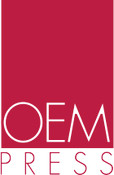Biological monitoring is a complex and sometimes daunting area of occupational and environmental medicine. Clinical Practice of Biological Monitoring, Second Edition provides a clear path for the intricate task of selecting the appropriate laboratory test, the most relevant matrix for testing, or the most informative analyte so as to best interpret a chemical test result for clinical relevance.
Highlights of the second edition:
- Devoted to a single chemical, each chapter contains a quick-guide table indicating the best analyte, the best matrix, and a level-of-concern value for the substance.
- Further, the book identifies chemicals that cannot be measured directly, thereby allowing for time savings and avoidance of unnecessary testing.
- Ten new chapters and updated First Edition chapters, elucidate exposure to chemicals now contemporaneous with commerce or public health.
- Small enough to carry in your pocket!
Determining what test to do for an individual chemical exposure need not be a challenge. Refer to your pocket consultant, Clinical Practice of Biological Monitoring, Second Edition, for concise guidance on monitoring exposure to chemicals.
NOTE: The eBook version is online access only and NOT downloadable
Frequently, it is challenging to choose the proper laboratory test, the most relevant biological matrix for testing, or the most informative analyte to provide the best interpretation and clinical relevance to the chemical test result. Our aim was to compose a practical and clinically relevant guide to biological monitoring. After years of intensive research, discussion, and writing, we present Clinical Practice of Biological Monitoring, Second Edition. In addition to refining previous chapters, this edition contains additional chapters regarding chemicals that now are contemporaneous with commerce or public health. However, limited commercially- available assays constrain the selection of chemicals to include in this edition.
The subject matter of this text is human exposure to inorganic, organic, and organometallic substances from industrial and environmental sources. For the reader, we elucidate occupational, environmental, and toxicology basics as they pertain to biological monitoring methods and objectives. We also discuss the interface of biomonitoring in causal methodology. Moreover, we detail both advantages and limitations of biological monitoring, as well as practical pre-analytical and post-analytical considerations. At the end of each chapter and augmented with figures and tables, are methods for assessing exposure. Most chapters include a quick-guide table succinctly indicating the best analyte, the best matrix, and a level-of-concern value for each substance. While not a health benchmark, the level-of-concern value is a potential indicator of a breach in industrial controls or elevated ambient concentrations requiring further investigation.
Preface vii
Acknowledgments ix
Contributing Authors xi
Section I: Foundations of Biological Monitoring
Introduction to Biological Monitoring
Kelvin Wooller, MB BS (Syd)
Biological Monitoring and Causation
Section II: Individual Chemicals
Acetone
Acrylamide
Aluminum
Antimony
Arsenic
Barium
Benzene
Beryllium
Bismuth
Bisphenol A
Bromine
1,3-Butadiene
Cadmium
Caffeine (1,3,7-trimethylxanthine)
Carbon Disulfide
Carbon Monoxide
Carbon Tetrachloride
Chloral Hydrate
Chloroform
Chromium
Cobalt
Copper
Cyanide
Cyclohexanone
1,1-Dichloroethane
1,2-Dichloroethane
Dichloromethane
Diethyl Ether
Diethylene Glycol
1,4-Dioxane
Ethyl Tertiary Butyl Ether (ETBE) and Methyl Tertiary Butyl Ether (MTBE)
Ethylene Glycol
Ethylene Oxide
Fluoride
Formaldehyde
Gadolinium
Germanium
Hexane
Hydrogen Sulfide
Lead
Lithium
Magnesium
Manganese
Mercury
Methanol
Methyl Chloroform
Molybdenum
Nickel
Nicotine
Niobium
Nitriles
Nitrous Oxide
Pentachlorophenol
Perchlorates
Perfluorooctanoic Acid
Phenol
Phenoxyacetic Acid Herbicides
Phthalates
Platinum
Selenium
Silver
Styrene
Tellurium
Tetracholorethylene
Thallium
Tin
Titanium
Toluene
Trichloroethylene
Uranium
Vanadium
Vinyl Chloride
Xylene
Zinc
| Publication Date | 2019 |
|---|---|
| Format | Softcover, 302 pages |
| ISBN | 9781883595821 |
| Product Code | 23116 |



